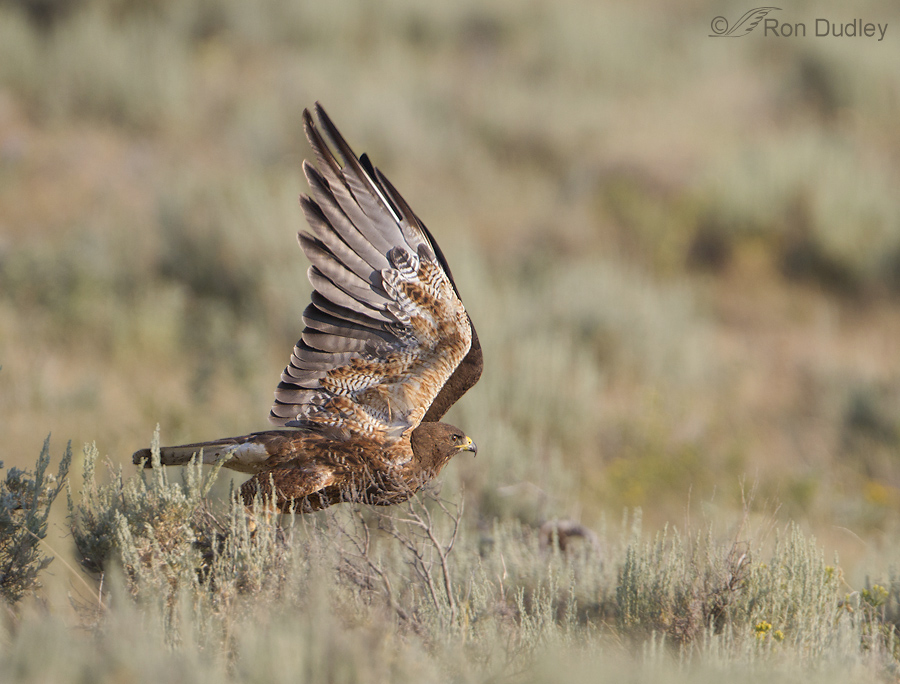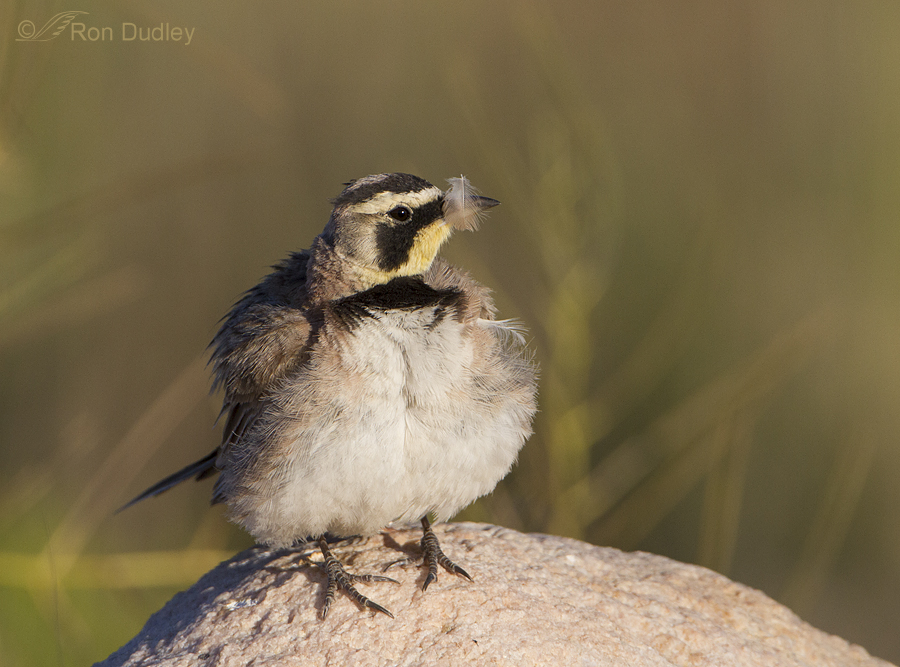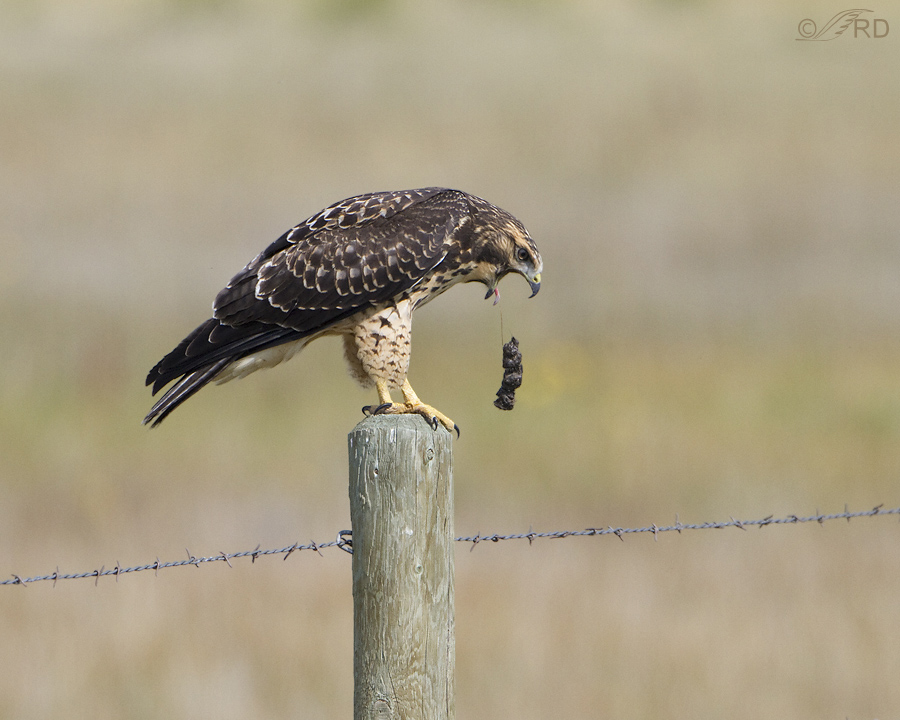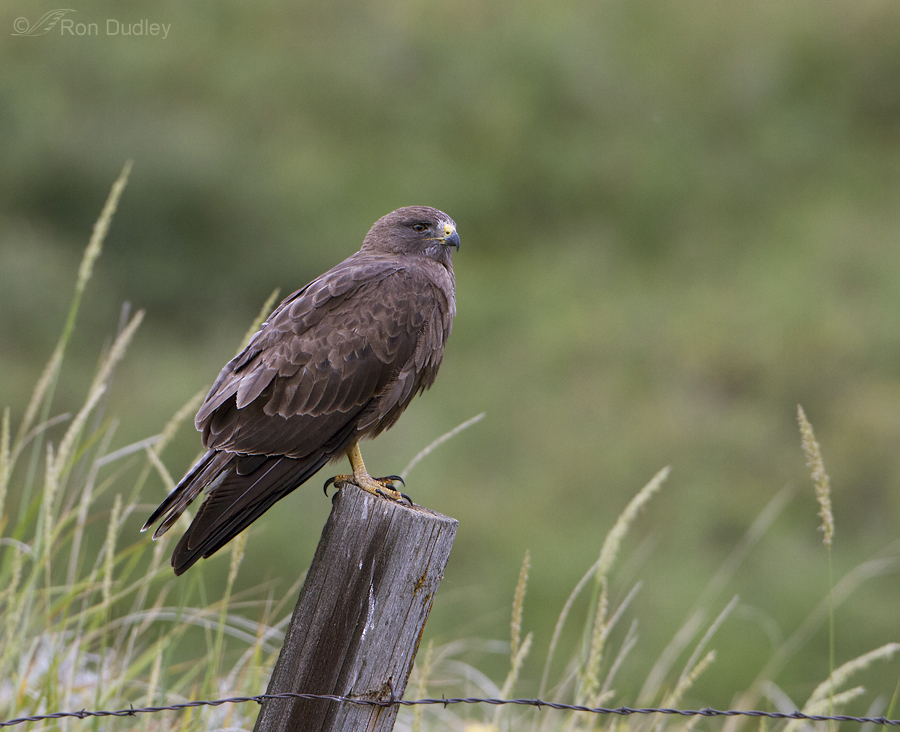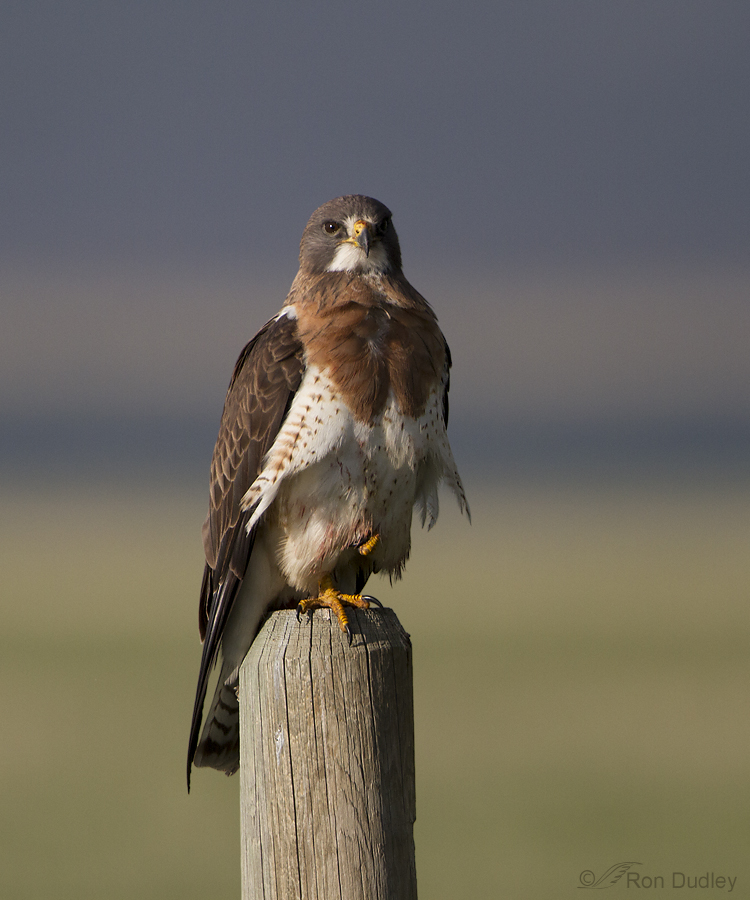Category: Swainson’s Hawks
Swainson’s Hawks – Antipicating Their Arrival
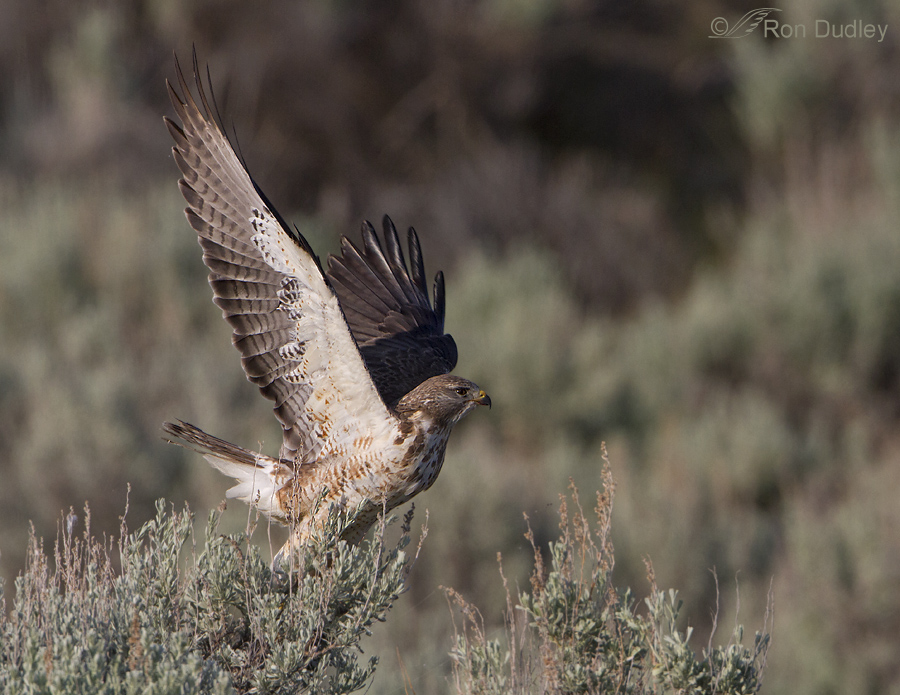
Swainson’s Hawks have been absent from North America for many months. They winter in the pampas of South America and their breeding ground is the temperate zone of North America which means their annual migratory round trip is a long one – roughly 12,000 miles (among raptors only the Arctic Peregrine Falcon migrates further).
Reminiscing About My Last Montana Camping Trip
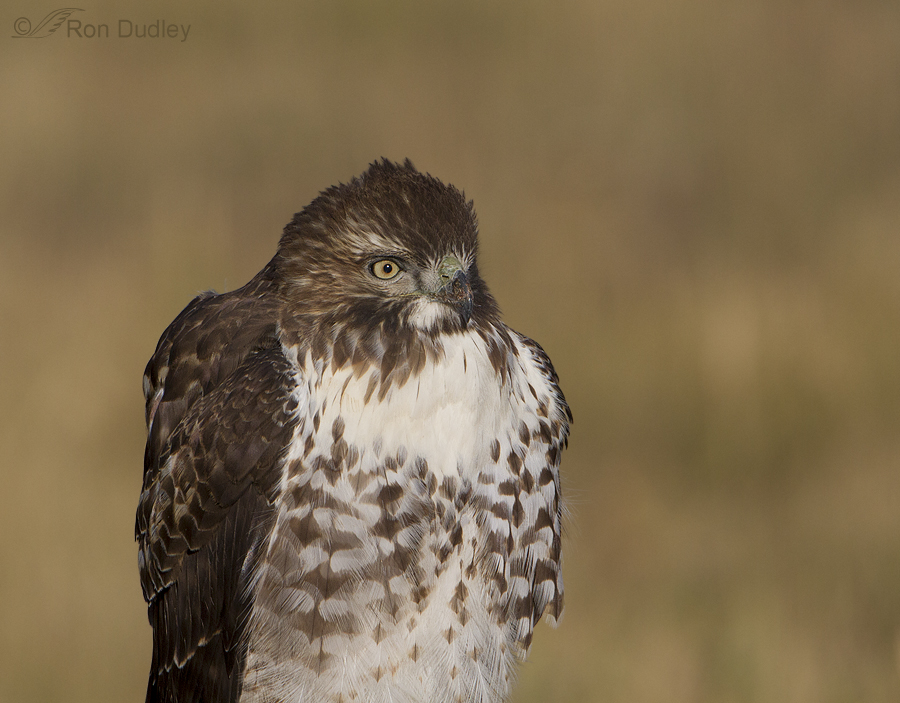
My plan this morning was to make a simple, single image post but with a snowstorm predicted for today I began to reminisce about my last Montana camping venture and decided to take a trip down memory lane with this post. I hoped to make one last visit to Montana before winter set in but I’ve now faced the grim reality that it just isn’t going to happen. These images were all taken in mid-September in and near the Centennial Valley.
Birds Befuddled By Stray Feathers
Anticipating Raptor Take-off
Swainson’s Hawk Optical Illusion
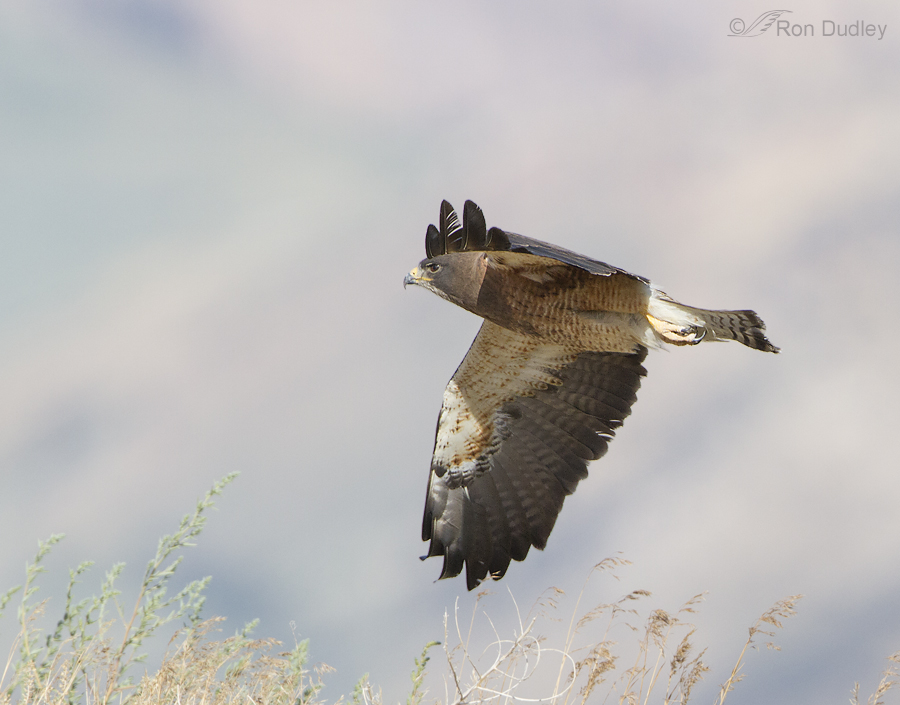
Each time I look at this image, at first the wing above the head appears to be the birds right wing on the far side of the body. But then a few seconds later my brain tells me that’s impossible because the lower wing is obviously the right wing and it’s impossible (or at least highly unlikely) for the hawk to have two right wings.
Dark Morph Swainson’s Hawk And More
Intermediate Morph Swainson’s Hawk
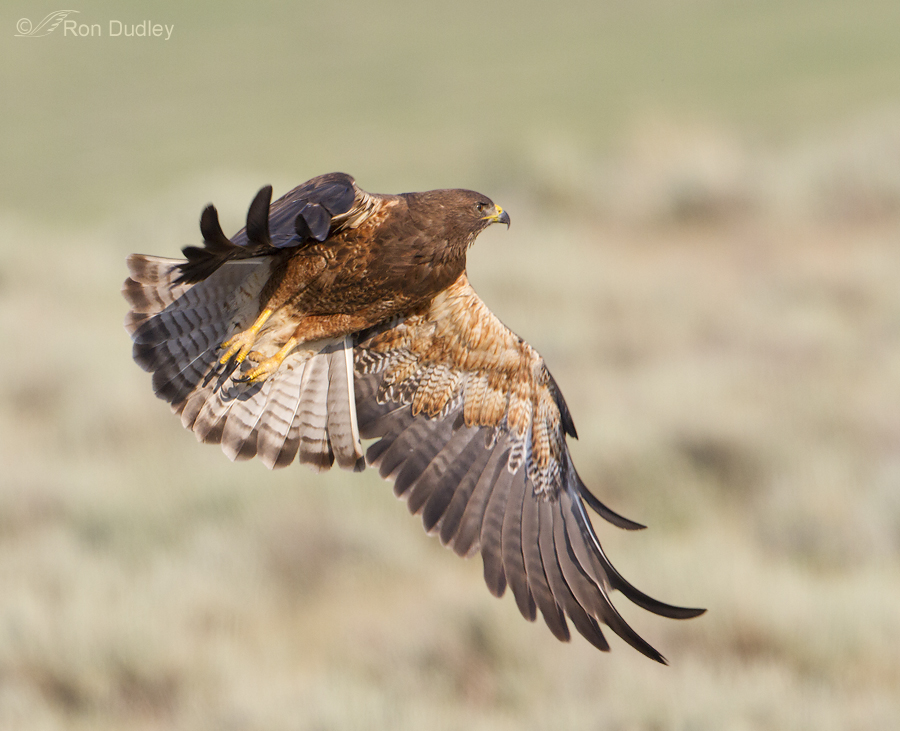
This is the third of my series of four posts on color morphs of the Swainson’s Hawk that I photographed on my last trip to Montana late last month. Todays bird is an intermediate morph.
The three morph categories are convenient to use but color variation of Swainson’s Hawks is almost continuous from darker to lighter individuals so the morph categories are somewhat arbitrary. I sometimes struggle with feeling confident about which category a particular bird belongs in.
Adult Light Morph Swainson’s Hawk
My last post was of a juvenile light morph Swainson’s Hawk transitioning into a subadult, this bird is an adult light morph and my next post will be of a dark morph Swainson’s (and perhaps an intermediate morph also) – this is turning into a series…
Subadult Light Morph Swainson’s Hawk
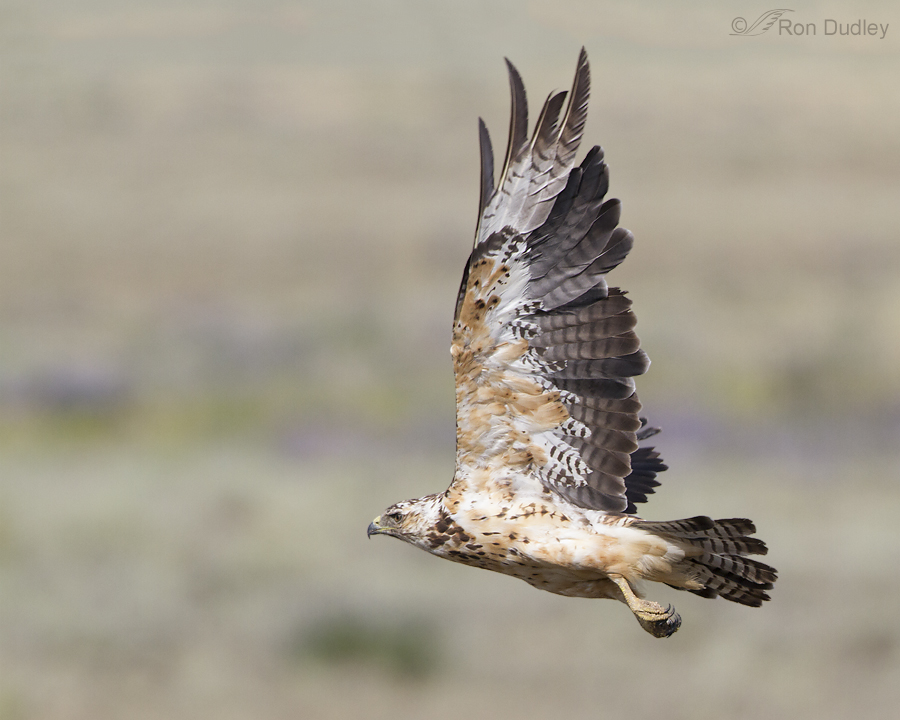
I’m always interested in the color phases of the various raptors I encounter so when we found this subadult Light Morph Swainson’s Hawk on July 25 on our last trip to southwest Montana it got my attention. These worn young birds look white-headed in spring and early summer because of fading – much different from the adults.
Swainson’s Hawk In Full Flight
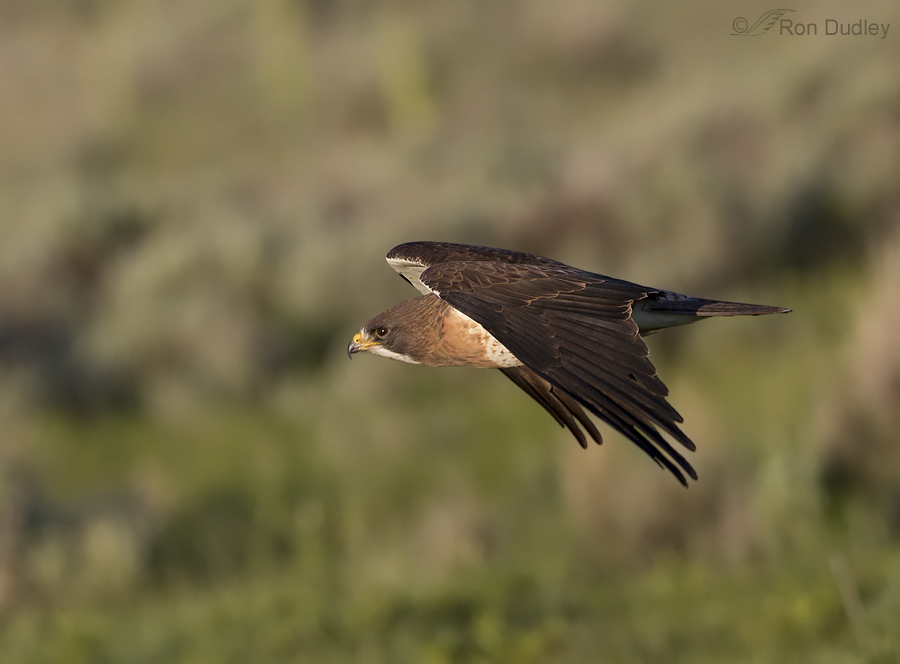
In Montana (and elsewhere I presume) orange paint on fence posts is used to mark private property and prevent trespass and hunting without permission on private lands. Apparently some land owners are color blind and use red paint instead of orange but the universally understood message is still the same – stay out!
Not all of the posts are so-marked (perhaps 10%?) but the birds I photograph sure have a nasty habit of choosing those ugly posts to perch on when I’m trying to photograph them. Such was the case with this Swainson’s Hawk a few days ago in western Montana.
Swainson’s Hawk Buddies
Chasing The Light For A Swainson’s Hawk
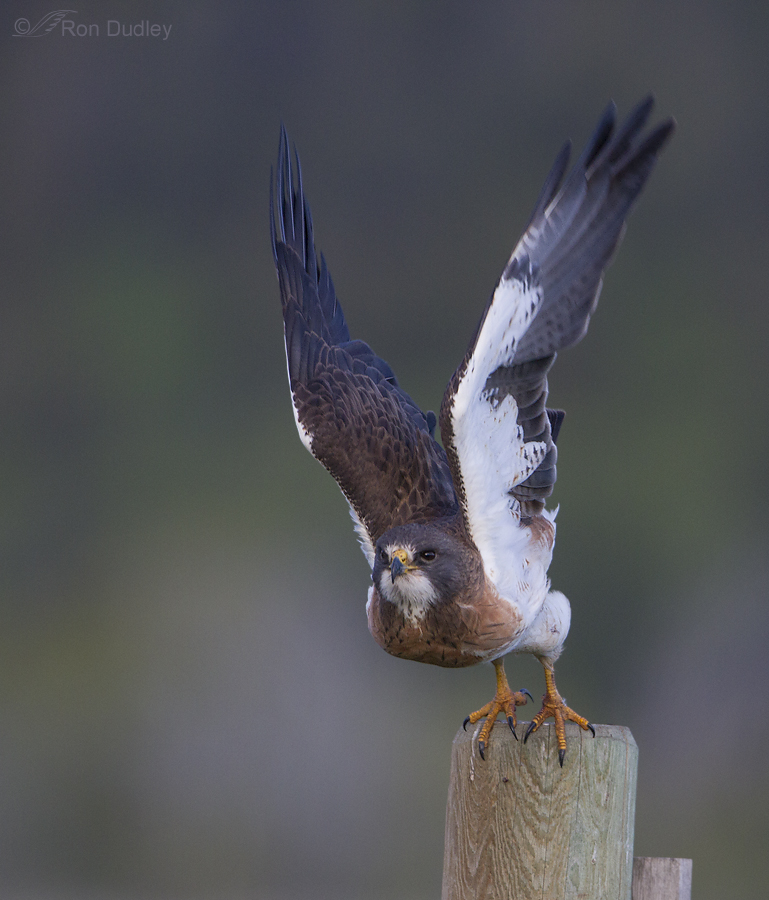
Mia and I often joke with each other that we’d make terrible landscape photographers because we’d be bored by all the waiting around for ideal conditions such as dramatic clouds and perfect light. We much prefer the excitement, unpredictability and the occasional and unexpected delights of bird photography. This Swainson’s Hawk was one of those nice surprises.
Swainson’s Hawk – Contrasting Top And Bottom Views In Flight
This bird was one of the early migrants into Utah in the first week of April this year. Swainson’s Hawks winter in South America, which means they funnel through narrow Central America as they migrate each way. To give you an idea of how many birds that involves, 845,000 of them have been counted as they passed over Veracruz, Mexico in a single autumn. Incredible! 1/2500, f/6.3, ISO 500, 500 f/4, natural light, not baited, set up or called in I found this bird in a remote area of Box Elder County, hunting from power poles. One of the reasons I like this image is because it’s fairly unusual for me to get a raptor in full flight (instead of just after taking off, note the position of the feet) when it’s not soaring or gliding with its wings in a horizontal position. I’m always interested when I can get images that contrast the ventral and dorsal colors and plumage patterns of the same species in flight. Swainson’s Hawks are quite dark dorsally. 1/2500, f/6.3, ISO 500, 500 f/4, natural light, not baited, set up or called in But when you can get good light in the ventral view, the contrast is striking. Even though these two images were taken 34 minutes apart, I’m relatively certain that it’s the same bird in both shots. This hawk was coming to land on a power pole and even though the flight position screams for a perch in front of the bird, I took the liberty of cloning out the ugly pole…
Swainson’s Hawks In Different Types Of Light
It goes without saying that light angle, intensity and warmth can have huge effects on an image, both positive and negative. I thought it might be interesting to see the effects of different types of light on the same species – in this case, Swainson’s Hawks. 1/160, f/6.3, ISO 640, 500 f/4, 1.4 tc, natural light, not baited, set up or called in Here, the sun was low and the light warm. The light was directional (side lighting the bird) but it worked pretty well because the darker parts of the bird are in the direct light. The head angle is just right for this pose – if the head were angled any more toward me I’d have lost the catch light and light on the face. If it were turned any more away from me I’d have lost good eye contact. 1/1250, f/5.6, ISO 640, 500 f/4, 1.4 tc, natural light, not baited, set up or called in Like in the previous image, this hawk is side lit. The difference is that the bird has its light, creamy colored belly facing the sun so the whites, though they’re not blown out, are a tad too bright and lacking detail. 1/2000, f/6.3, ISO 500, 500 f/4, natural light, not baited, set up or called in I took this image a little later in the morning, so the light wasn’t so warm and at that angle enough of it is reflecting up from the ground to give me sufficient detail in the shaded, dark brown plumage…
Swainson’s Hawks – Antipicating Their Arrival

Swainson’s Hawks have been absent from North America for many months. They winter in the pampas of South America and their breeding ground is the temperate zone of North America which means their annual migratory round trip is a long one – roughly 12,000 miles (among raptors only the Arctic Peregrine Falcon migrates further).
Reminiscing About My Last Montana Camping Trip

My plan this morning was to make a simple, single image post but with a snowstorm predicted for today I began to reminisce about my last Montana camping venture and decided to take a trip down memory lane with this post. I hoped to make one last visit to Montana before winter set in but I’ve now faced the grim reality that it just isn’t going to happen. These images were all taken in mid-September in and near the Centennial Valley.
Birds Befuddled By Stray Feathers
Anticipating Raptor Take-off
Swainson’s Hawk Optical Illusion

Each time I look at this image, at first the wing above the head appears to be the birds right wing on the far side of the body. But then a few seconds later my brain tells me that’s impossible because the lower wing is obviously the right wing and it’s impossible (or at least highly unlikely) for the hawk to have two right wings.
Dark Morph Swainson’s Hawk And More
Intermediate Morph Swainson’s Hawk

This is the third of my series of four posts on color morphs of the Swainson’s Hawk that I photographed on my last trip to Montana late last month. Todays bird is an intermediate morph.
The three morph categories are convenient to use but color variation of Swainson’s Hawks is almost continuous from darker to lighter individuals so the morph categories are somewhat arbitrary. I sometimes struggle with feeling confident about which category a particular bird belongs in.
Adult Light Morph Swainson’s Hawk
My last post was of a juvenile light morph Swainson’s Hawk transitioning into a subadult, this bird is an adult light morph and my next post will be of a dark morph Swainson’s (and perhaps an intermediate morph also) – this is turning into a series…
Subadult Light Morph Swainson’s Hawk

I’m always interested in the color phases of the various raptors I encounter so when we found this subadult Light Morph Swainson’s Hawk on July 25 on our last trip to southwest Montana it got my attention. These worn young birds look white-headed in spring and early summer because of fading – much different from the adults.
Swainson’s Hawk In Full Flight

In Montana (and elsewhere I presume) orange paint on fence posts is used to mark private property and prevent trespass and hunting without permission on private lands. Apparently some land owners are color blind and use red paint instead of orange but the universally understood message is still the same – stay out!
Not all of the posts are so-marked (perhaps 10%?) but the birds I photograph sure have a nasty habit of choosing those ugly posts to perch on when I’m trying to photograph them. Such was the case with this Swainson’s Hawk a few days ago in western Montana.
Swainson’s Hawk Buddies
Chasing The Light For A Swainson’s Hawk

Mia and I often joke with each other that we’d make terrible landscape photographers because we’d be bored by all the waiting around for ideal conditions such as dramatic clouds and perfect light. We much prefer the excitement, unpredictability and the occasional and unexpected delights of bird photography. This Swainson’s Hawk was one of those nice surprises.
Swainson’s Hawk – Contrasting Top And Bottom Views In Flight
This bird was one of the early migrants into Utah in the first week of April this year. Swainson’s Hawks winter in South America, which means they funnel through narrow Central America as they migrate each way. To give you an idea of how many birds that involves, 845,000 of them have been counted as they passed over Veracruz, Mexico in a single autumn. Incredible! 1/2500, f/6.3, ISO 500, 500 f/4, natural light, not baited, set up or called in I found this bird in a remote area of Box Elder County, hunting from power poles. One of the reasons I like this image is because it’s fairly unusual for me to get a raptor in full flight (instead of just after taking off, note the position of the feet) when it’s not soaring or gliding with its wings in a horizontal position. I’m always interested when I can get images that contrast the ventral and dorsal colors and plumage patterns of the same species in flight. Swainson’s Hawks are quite dark dorsally. 1/2500, f/6.3, ISO 500, 500 f/4, natural light, not baited, set up or called in But when you can get good light in the ventral view, the contrast is striking. Even though these two images were taken 34 minutes apart, I’m relatively certain that it’s the same bird in both shots. This hawk was coming to land on a power pole and even though the flight position screams for a perch in front of the bird, I took the liberty of cloning out the ugly pole…
Swainson’s Hawks In Different Types Of Light
It goes without saying that light angle, intensity and warmth can have huge effects on an image, both positive and negative. I thought it might be interesting to see the effects of different types of light on the same species – in this case, Swainson’s Hawks. 1/160, f/6.3, ISO 640, 500 f/4, 1.4 tc, natural light, not baited, set up or called in Here, the sun was low and the light warm. The light was directional (side lighting the bird) but it worked pretty well because the darker parts of the bird are in the direct light. The head angle is just right for this pose – if the head were angled any more toward me I’d have lost the catch light and light on the face. If it were turned any more away from me I’d have lost good eye contact. 1/1250, f/5.6, ISO 640, 500 f/4, 1.4 tc, natural light, not baited, set up or called in Like in the previous image, this hawk is side lit. The difference is that the bird has its light, creamy colored belly facing the sun so the whites, though they’re not blown out, are a tad too bright and lacking detail. 1/2000, f/6.3, ISO 500, 500 f/4, natural light, not baited, set up or called in I took this image a little later in the morning, so the light wasn’t so warm and at that angle enough of it is reflecting up from the ground to give me sufficient detail in the shaded, dark brown plumage…


